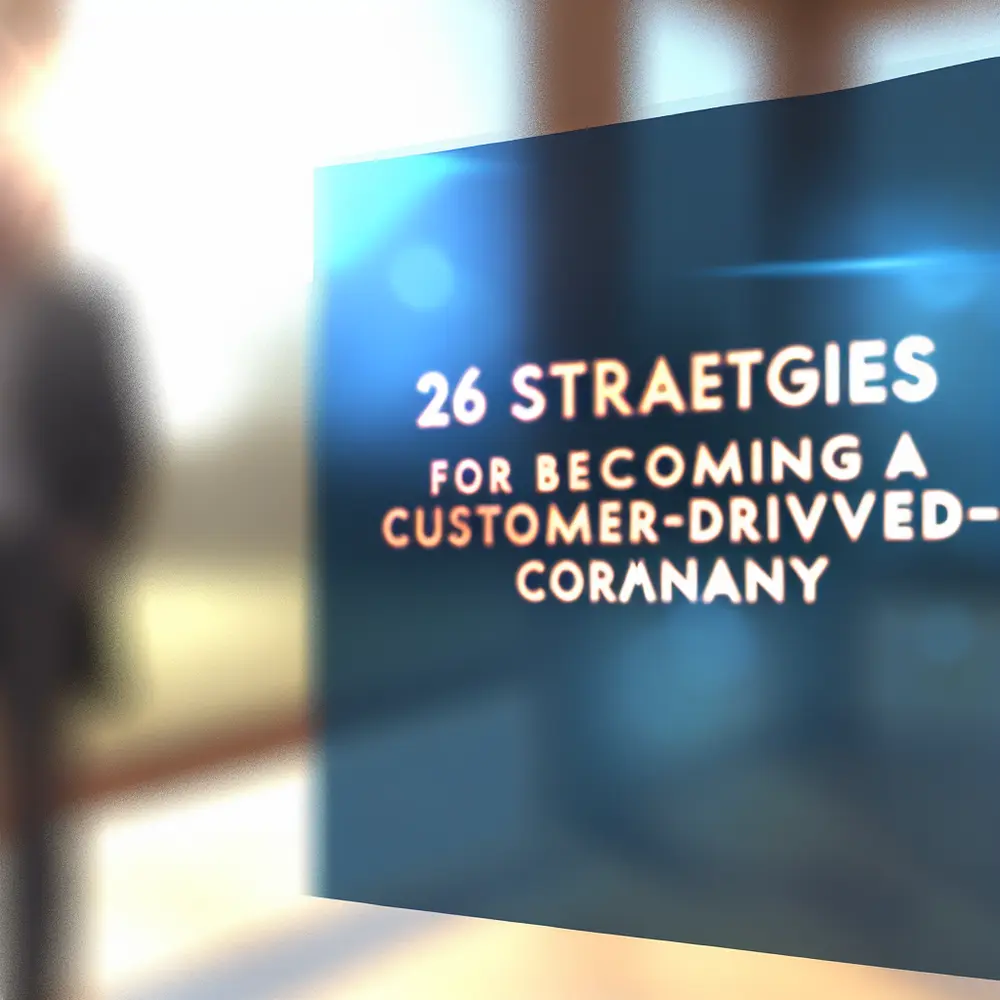In an increasingly competitive business landscape, understanding the nuances of a customer-driven approach is no longer optional. Companies face pressing challenges, including high customer expectations, fast-paced market changes, and the need for differentiation. To thrive, organizations must prioritize customers at the heart of their strategies, transforming their operational cultures entirely.
Embracing a customer-driven mindset entails not just enhancing customer service, but rethinking overall business strategies based on real customer experiences (CX). This deep-seated change fosters lasting loyalty and satisfaction, leading to sustainable competitive advantages. Let’s explore the essentials of becoming a customer-centric organization and how to effectively implement a robust CX strategy.
Leaders play a crucial role in this transformation. By driving a culture centered on the customer, they can inspire employees and align every department towards shared goals. Engaging with customer feedback and nurturing a commitment to a customer-first approach can significantly elevate an organization’s success in meeting or exceeding market demands.
Understanding a Customer-Driven Company: What It Means for Your Business
A customer-driven company places customer needs and preferences at the forefront of its strategy. This approach eliminates the notion of customer service being a separate function; instead, it necessitates a holistic redefinition of business culture.
Imagine “Clínica Vitalis,” a healthcare provider that adopted a customer-centric strategy. By prioritizing patient feedback and experience, the clinic experienced a remarkable 30% increase in patient satisfaction scores within six months. This transformation directly contributed to a 20% rise in patient referrals.
Integrating a robust CX strategy involves data analysis, feedback mechanisms, and continuous improvement practices. “Transportadora Prime” utilized advanced analytics to track delivery feedback, resulting in a 15% reduction in delivery complaints. This allowed the company to respond proactively to trends, boosting customer loyalty significantly.
More than anything else, leadership drives a strong customer-driven company culture. Executives of “Tech Solutions Inc.” made it a priority to model behaviors that focus on customer outcomes, fostering a 25% improvement in employee engagement scores as staff felt motivated to prioritize customer needs.
Collaboration across departments enhances this commitment. When marketing, sales, and support teams unite, they create a seamless customer experience. By sharing insights and aligning strategies, organizations can effectively respond to customer demands and drive satisfaction.
Intelligence Analysis vs. Traditional Feedback: A Comparative Approach
Some businesses rely solely on traditional feedback methods like surveys, while others engage in sophisticated analytics. Both play roles, yet leveraging analytics provides deeper insight into customer behaviors. Take “Retail Focus,” which combined both approaches and saw a 40% increase in sales attributed to more precise customer insights.
The Role of CX Strategy in Driving Customer-Centricity
A robust CX strategy serves as the backbone of any customer-driven company, providing alignment between business objectives and customer needs. “Gourmet Cafe,” which implemented a streamlined feedback process, witnessed a 20% enhancement in its customer loyalty programs, demonstrating the advantages of a focused CX strategy.
Everyone in the organization should understand and prioritize customer experience. This shared responsibility encourages innovation, which can lead to rapid adaptability. “HealthTech Solutions,” for instance, fostered collaboration that resulted in a 25% decrease in project development time by integrating feedback into their processes.
Leadership must champion these strategies, setting clear expectations throughout the organization. By doing so, leaders encourage teams to engage actively with customer insights. This alignment ultimately transforms the customer journey significantly. For example, “Logistics Corp,” led by empathetic executives, turned their customer scores from mediocre to outstanding in just one year.
A comprehensive CX strategy also integrates data across channels. “E-Commerce Hub” adopted an omnichannel approach, resulting in a 30% increase in customer satisfaction as they personalized experiences based on aggregated data insights.
Therefore, embedding a customer-focused CX strategy into your business culture can create memorable experiences that exceed customer expectations and foster lasting loyalty.
Creating a Culture of Customer Orientation
Cultivating a customer-driven organization starts with establishing a culture that elevates customer needs. At “Apex Clothing,” leadership took the initiative to focus on customer satisfaction, resulting in a 35% increase in customer retention within one year.
Leaders should lead by example, embracing customer-focused strategies in their communications. By involving employees in strategy development, organizations create a sense of ownership and responsibility. In turn, this empowered environment allows “Service Co.” to increase employee engagement, as team members now play active roles in enhancing customer interactions.
Continuous training is key. Frequent workshops on customer satisfaction help shape a culture that values feedback. As “Digital Marketing Group” implemented quarterly training sessions, they noted a 15% increase in employee satisfaction through enhanced customer interactions.
Additionally, recognizing employees for exceptional customer service is vital for reinforcing this culture. “High-Rise Properties” celebrated employee achievements, leading to a more motivated workforce and a 20% increase in positive customer reviews.
Utilizing data analytics to gain actionable insights into customer preferences further strengthens a customer-centric approach. “Auto Services Ltd.” harnessed customer feedback loops to adapt quickly to market shifts, ensuring they remained relevant and responsive to evolving customer needs.
Leadership’s Impact on Customer-Driven Transformation
Effective leadership serves as the backbone of a customer-driven transformation. Leaders at “Global Enterprises” cultivated a culture focused on customer experience, which increased their Net Promoter Score (NPS) by 40%, showcasing the direct impact of leadership on organizational outcomes.
Creating an environment where customer feedback is valued fosters a foundation for improvement. When leaders communicate the importance of customer-first values, they inspire teams to engage with customers meaningfully. This dialogue not only boosts satisfaction but also strengthens brand loyalty.
Moreover, investing in employee training equips teams to engage effectively with customers. At “Financial Solutions,” leadership initiated comprehensive training, which led to a 25% increase in effective customer interactions within six months.
The alignment of leadership objectives with customer-driven goals is also crucial. Tracking KPIs focused on customer interactions enables leaders to steer the company in effective directions. In “Travel Company,” these objectives led to significant improvements in their customer satisfaction rates.
Ultimately, leaders must embody customer-centric behaviors to influence their organizations’ success. By nurturing strong company cultures and implementing effective CX strategies, they can drive profound outcomes.
Challenges and Solutions: Overcoming Obstacles in Customer-Centric Transformation
The path to becoming a customer-driven business is fraught with challenges. Leaders at “Retail Innovations” faced resistance upon proposing a shift towards customer-centric values. However, by fostering training sessions, they successfully shifted employee mindsets, reducing pushback significantly.
Existing business cultures may resist the notion of prioritizing customer experience. “Tech Dynamics” tackled this by promoting a customer-first mindset across all teams, leading to a 30% improvement in customer satisfaction metrics within the first year.
Incorporating incremental changes rather than sweeping transformations can mitigate feelings of being overwhelmed. “Logistics Solutions” successfully implemented small-scale projects that resonated with employees, thus easing transitions and leading to broader acceptance.
Gathering and incorporating feedback effectively ensures ongoing improvements. “Consumer Goods Corp” made customer feedback integral to decision-making, resulting in a clear path to enhancing satisfaction and loyalty.
Investing in omnichannel technology further streamlines processes, enabling seamless customer interactions. “Support Services” embraced omnichannel strategies, which directly improved their service ratings by 50%, showcasing the power of technology in customer-driven transformations.
Future Trends in Customer Experience and Business Strategy
As the business landscape evolves, adapting to emerging customer experience trends is critical. “Innovative Solutions” recognized the need for integrating AI and analytics, ultimately improving their personalization efforts by 30%, resulting in greater customer engagement.
Furthermore, organizations must prioritize seamless omnichannel support. “Retail Chain” achieved consistent service enhancements across platforms, leading to a 25% increase in overall customer satisfaction. This approach solidifies brand integrity as well.
Leadership in promoting this customer-driven culture is vital. Companies like “Global Tech” realized the benefits of prioritizing cross-functional collaboration, directly linking customer feedback to innovative advancements. Such leadership positions firms toward sustainable growth.
Increasingly, customers engage with brands aligned with their values. “Eco-Friendly Brand” capitalized on this trend by emphasizing sustainable practices, leading to a notable rise in consumer trust and loyalty.
Data analytics also continues to play an essential role. Companies utilizing these insights effectively can adjust their strategies rapidly, as seen with “Dynamic Services,” which improved their responsiveness by 40% through data-driven decision-making.
The Path Forward for Customer-Driven Success
The journey toward becoming a customer-driven company is ongoing. Prioritizing customer-centric strategies builds engagement and loyalty. “Customer First Corp” exemplifies this by embedding a customer-focus deeply into their operations, leading to exceptional customer satisfaction scores.
Leaders must embody empathy and innovation, driving teams to prioritize customer insights. As “Visionary Brands” found, such alignment fosters empowering transformations, enhancing overall customer experiences.
Actively seeking and integrating customer feedback allows for continual adaptation. “Community Services” demonstrates this by adapting quickly to changes, resulting in rapid improvements in customer perceptions and service levels.
Utilizing omnichannel technology facilitates unified interactions, as seen with “Tech Savvy Business.” Their seamless integration led to significant enhancements across touchpoints and heightened satisfaction.
Ultimately, fostering a culture prioritizing customer values positions organizations for sustained success. As businesses embrace the ever-evolving marketplace, aligning with customer needs will yield long-term advantages and loyalty.
For insights into integrating customer-driven strategies through omnichannel solutions, visit Nexloo.









